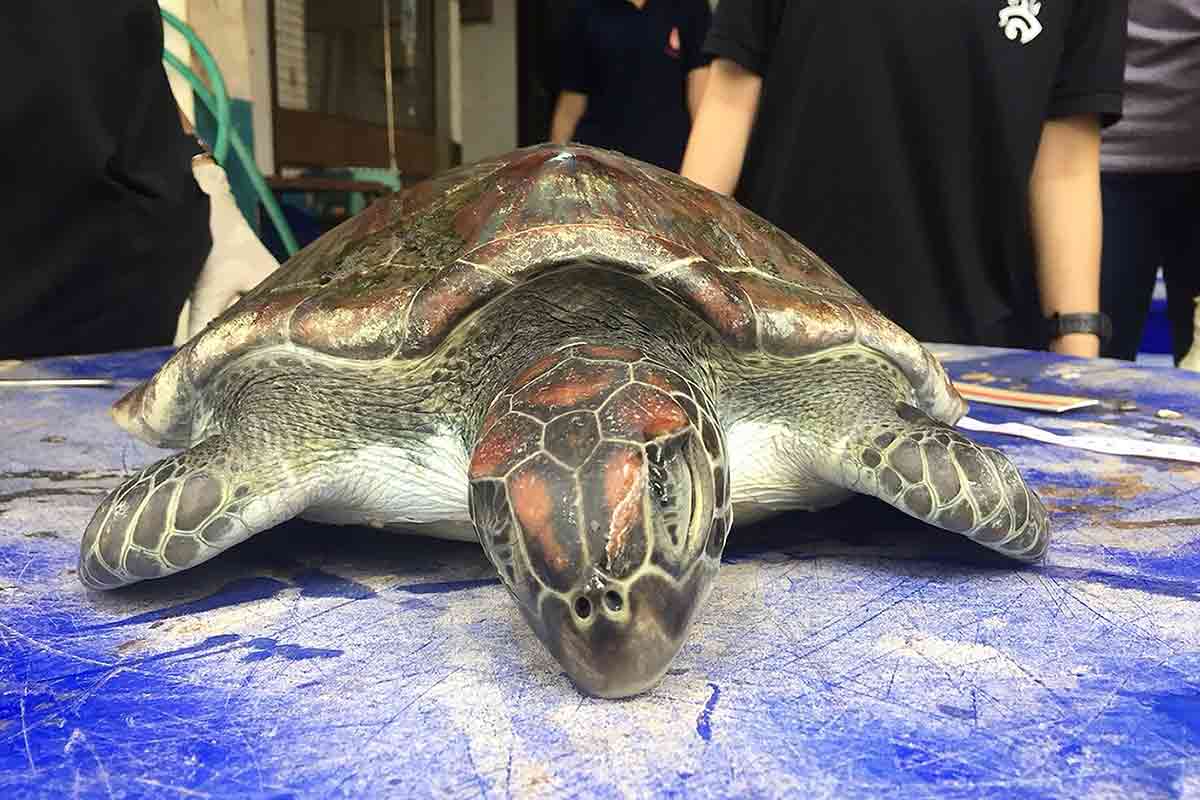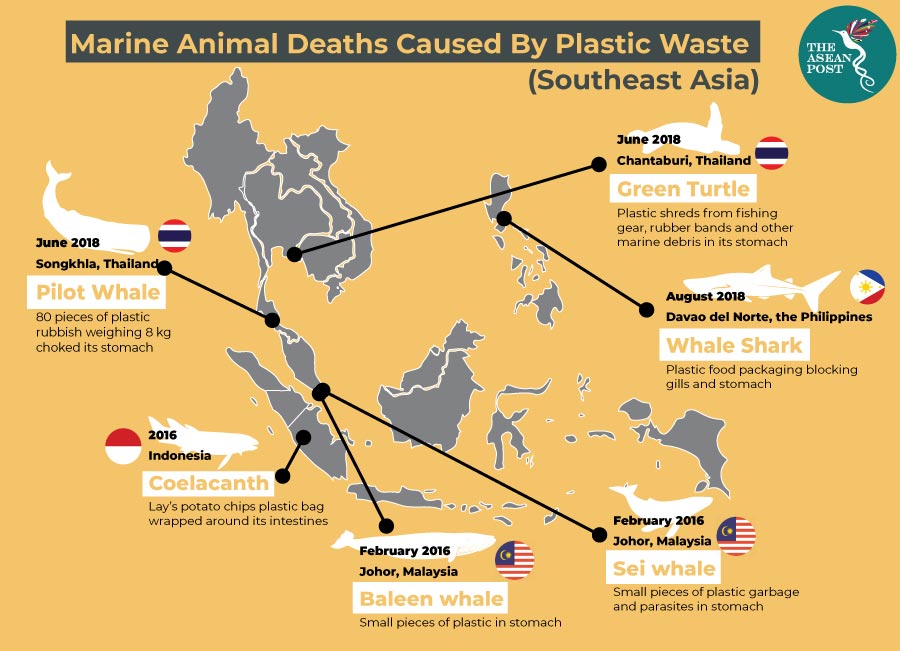How Many Animals Are Killed By Litter
Death by plastic waste

The carcass of a Green turtle after government veterinarians failed to salve it by intravenous feeding at the marine centre in Chantaburi province, Thailand. Plastic and other rubbish filled the turtle'southward intestinal track, leaving it unable to eat and acquired its expiry two days later. (Handout / Marine and Littoral Resources Development Centre / AFP Photo)
Humanity's enduring dear thing with plastic, a love more pronounced in the Southeast Asian region, has claimed some other victim. This time, the victim is then rare that it was once idea to accept been extinct 65 million years ago and is known past the moniker "living fossil". This week, pictures have surfaced of a dead Coelacanth taken past a fisherman in Indonesia in 2016 but but recently shared. Potential cause of death: Lay's Spud Chips plastic nutrient wrappers effectually its intestines. Only two out of 90 historical species of the Coelacanth are known to still be extant in the waters off Kenya, Tanzania, Mozambique, South Africa, Madagascar, Comoros and Republic of indonesia.
The endangered Coelacanth now joins a eye-breaking group of marine animals threatened past the increasing amount of plastic debris in our oceans. In Southeast Asia, a number of endangered marine animals killed with big amounts of plastic in their stomachs take been reported past the media. In June, a Pilot whale was found beached in Songkhla, Southern Thailand, choked to death by 80 pieces of plastic rubbish weighing eight kilograms in its stomach. In the same calendar month, a Light-green turtle was found dead in Chanthaburi, Thailand, with plastic shreds from fishing gear, condom bands and other marine debris in its tummy. In 2016, a Sei whale and a Baleen whale were found beached in the southern Malaysian state of Johor. Although information technology was not a conclusive cause for their deaths, plastic debris was plant in their stomachs.
These cases highlighted in the media are only the tip of the iceberg. While cases involving big or iconic species such equally whales, dolphins and turtles are given a lot of media attention, many other animals from less iconic species killed past marine plastic debris are ofttimes sadly overlooked. A marine biologist and lecturer at Kasetsart University, Thon Thamrongnawasawat, told the media that about 300 marine animals die each year in Thailand equally a result of ingesting plastic. Globally, it is estimated that over 100 million marine animals are killed each year past plastic waste product. This include species mentioned above as well as fish, seals and birds.

Southeast Asia's sea of plastic
In its reports, the United Nations Environs Programme (UNEP) estimates that over 300 one thousand thousand tons of plastic are produced every year, half of which is used in making single-employ items such every bit shopping numberless, cups and straws. Only nine percent of the ix billion tons of plastic the world has ever produced has been recycled, with the remaining ending upwards in landfills, dumps or in the surroundings. This includes at to the lowest degree viii one thousand thousand tons of plastic catastrophe upwardly in the oceans every twelvemonth. Floating plastic debris is currently the near arable item of marine litter, making up lxxx pct of all marine debris.
Five Southeast Asian countries, namely Indonesia, the Philippines, Vietnam, Thailand and Malaysia are amongst the top 10 countries worldwide ranked by mass of mismanaged plastic waste product. The 5 ASEAN member states collectively contributed 8.9 million metric tons of mismanaged plastic waste product, defined every bit material that is either littered or inadequately disposed in dumps or open, uncontrolled landfills. Mismanaged waste could eventually enter the sea via inland waterways, wastewater outflows, and transport by wind or tides.
Co-ordinate to the International Union for Conservation of Nature (IUCN), marine plastic pollution has affected at to the lowest degree 267 species, most visibly and disturbingly by ingestion, suffocation and entanglement. Floating plastic waste is oft mistaken for nutrient by marine animals and once ingested, these animals volition dice slowly of starvation equally their stomachs are filled with plastic debris.
Death of a gentle behemothic
Divers would attest that a shark whale sighting is ane of the most desired encounters of the marine kind. The boring-moving filter-feeding gentle giants have been described as majestic and magical, putting many of those who are lucky enough to run across them in the wild into a trance with their gracefulness. This week, a whale shark was plant beached on the Philippine shores of Tagum City in Davao del Norte. Environmentalist Darrell Blatchley reported that there was plastic waste product lodged in the gills of the fourteen-human foot juvenile whale shark which had to be pried out, while more plastic waste was plant inside its tum, blocking the fine filters of its intestines. He added the whale shark was also underweight and emaciated.
The UNEP estimates that the economic impairment caused past plastic waste in the Asia-Pacific tourism, fishing and aircraft industries is near US$ane.iii billion every year. This represents x percent of the full annual economic harm to the world's marine ecosystem acquired by plastic.
It is undeniable that plastic is a useful textile in our everyday life. Still, its employ should non be at the expense of the surroundings every bit we clearly cannot cope with the corporeality of plastic waste we generate. Unless we rethink our toxic relationship with plastic, our addiction to it could testify to be detrimental and even fatal to all life on the planet.
Source: https://theaseanpost.com/article/death-plastic-waste
Posted by: masonpate1995.blogspot.com

0 Response to "How Many Animals Are Killed By Litter"
Post a Comment